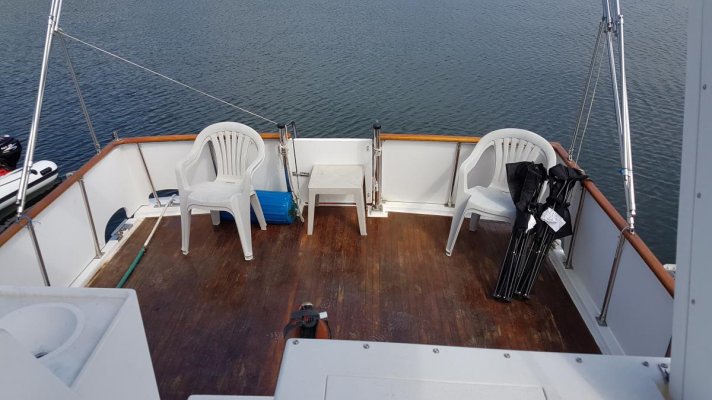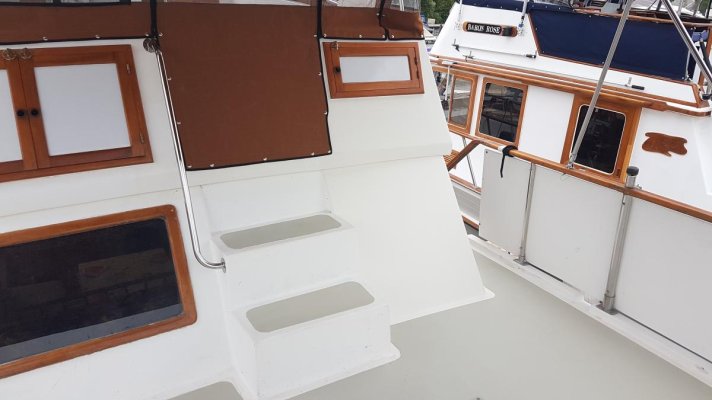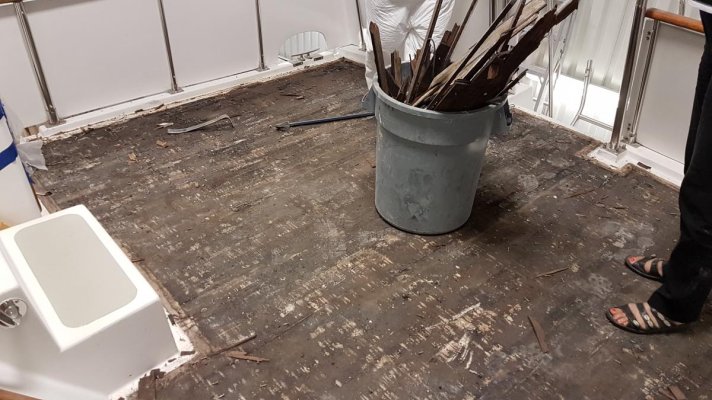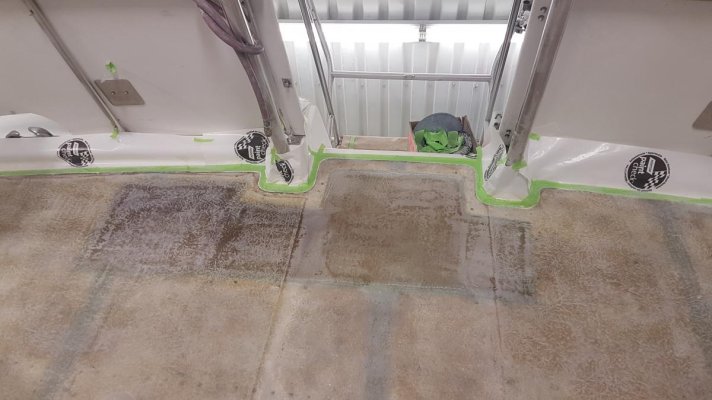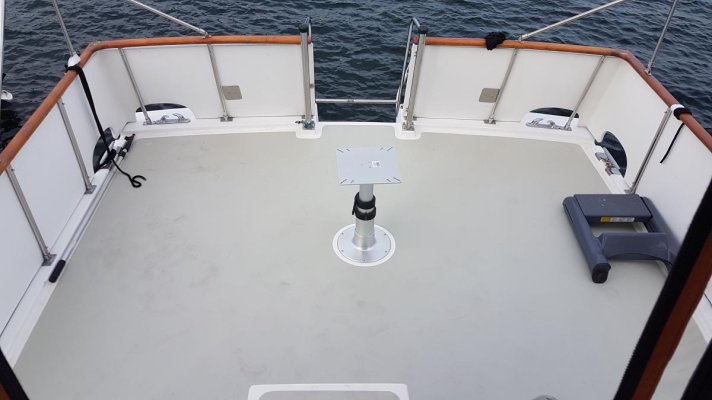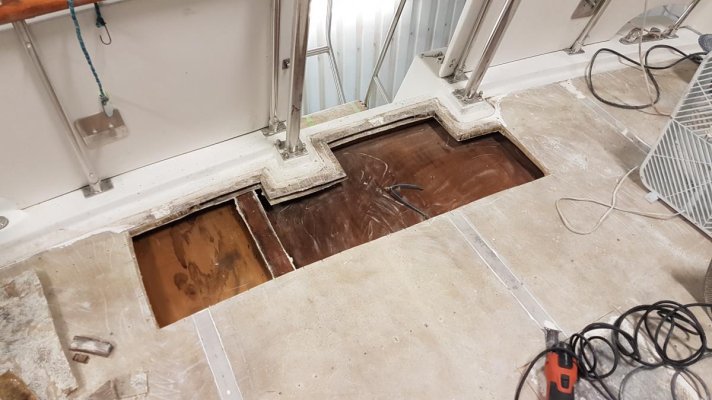Leveled, edges ground a little more, and cloth layed!
Now to build up the aft end with the new pieces, get an even bevel on the back, and lay 18oz cloth from the current edge wrapped around the end.
For anyone reading this who is wanting to learn how to fix their roof a few pointers:
You could just coat the marine ply with epoxy resin , sand fair, and paint or gelcoat. But if you do that it won't hold up to sharp objects (like dingy motors) being dropped on it.
Two layers of 6oz cloth would be stronger/easier for a beginner than 1 layer of 18oz.
You must wet out the wood (e.g. coat it with wet epoxy using a 4" or larger chip brush) before you lay the cloth down, or the wood will suck the resin out of the cloth.
Once the cloth is down and positioned, pour the resin on and use a fiberglass roller to spread it around and get it even. You need to keep rolling until it's just about to set to prevent any blisters that occur when the resin exotherms (a fancy word for gets hot). If you try to brush the resin onto the cloth it will pull up fibers and you'll have balls of what I call "cloth snot" you'll have to sand out.
For your own sake wear an organic respirator and replace the cartridges every year.
I used 635 thin Epoxy from U.S. composites. It's not as quality of a product as West System but it's 1/2 the price, and hey, this is a Taiwanese Trawler not a Hinkley.
This job (2 48" wide pieces of cloth just shy of 8 feet long took 72 pump strokes of resin and 24 strokes of hardener mixed in 3 batches of 30/10, 30/10, and 12/4. I get the resin tubs ready with the stroke count written on the tub so all I have to do is pump in the hardener, mix for 3 minutes with a mixing stick, and go.


 Thats awesome.
Thats awesome.